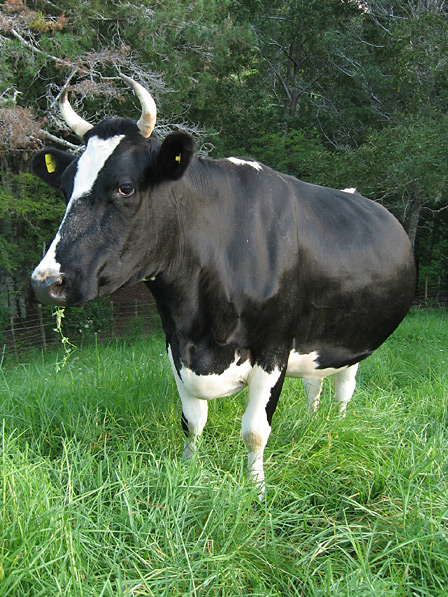Yesterday, loud cow mooing woke us up at about 3am. It sounded close. We thought it was one of our girls having her calf. I didn’t want to move, but Becky leapt out of bed. Pregnant belly and all, she started getting ready to go out there. If it wasn’t freezing outside, it was damn close. And it was wet. And dark. And muddy.
I managed to convince her to let me go and see what was happening. I started stumbling around, getting dressed, grabbing my Maglite and donning my headlamp. Jacket. Socks. Gumboots. And camera. Check. Ok. I set off into the blackness…

There are cows out here somewhere…
MOOOOOO!
It echoed throughout the valley. I thought for sure that it was one of our girls because it seemed so close. I headed in the general direction of the bellowing moo.
MOOOOOOOOOOOOOO!
Yep. It was getting louder. I swept my light across the paddock, looking for eyes reflecting back at me.
I remembered going out on a farm bike with Becky’s cousin, Paul, to check on his herd of very in-calf cows last season. I asked, “Are you looking for anything, in particular?”
He said, “Yeah, legs sticking out of bums.”
So, there I was, meandering through the darkness, trying to prepare myself for what I might see.
I eventually found Coco beast. She was very tired and didn’t seem too concerned with who or whatever was shining bright lights at her. She obviously wasn’t having a calf right now.
MoooooOOOOOOOO!
Still further away. I kept going… And going… Until I bumped into the fence that separates our property from a large bush block to the north.
MOOOOOOOOOOOOOOOO!
False alarm.
It wasn’t our cow. It was coming from that bush block.
That cow was so loud, it sounded like it was right outside our window. It just must have been the dead stillness that amplified the call. I trundled back toward the house. Becky was up by this point and she turned on the lights. I saw her headlamp heading towards me. She couldn’t help it. She just had to come out and have a look. I was a bit disappointed to report that it was some other cow wailing away… maybe in heat. Some cows go fully nuts when they’re in heat.
But we don’t have long to wait now… Esmerelda should be calving any day.





